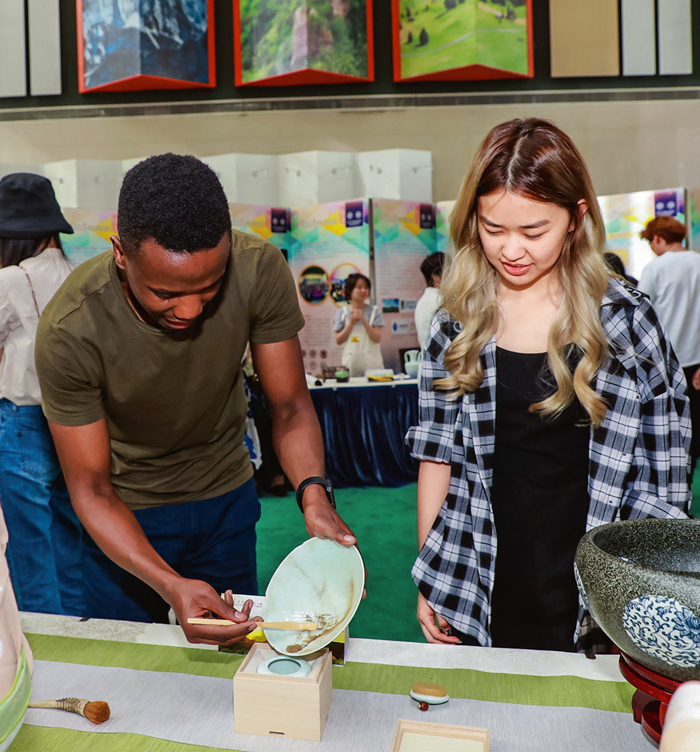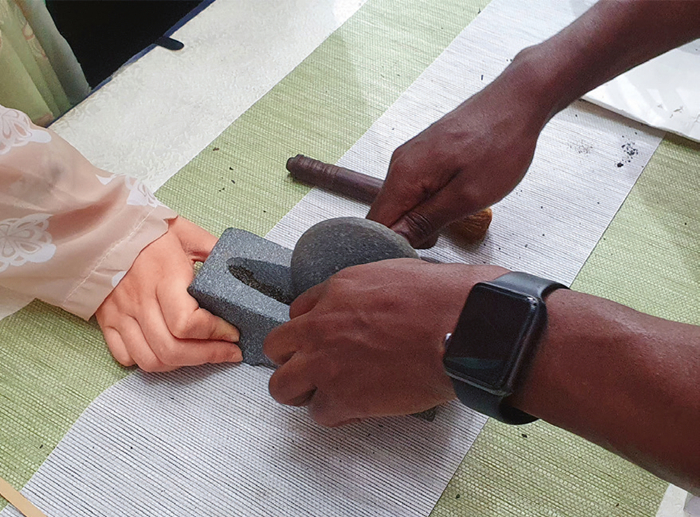|
||||||||||
| Home Nation World Business Opinion Lifestyle ChinAfrica Multimedia Columnists Documents Special Reports |
|
||||||||||
| Home Nation World Business Opinion Lifestyle ChinAfrica Multimedia Columnists Documents Special Reports |
| Stories from the competition |
| Tea Talk |
| Kenyan student masters the art of making Chinese tea and the culture behind it |
| By LI XIAOYU 丨VOL. 14 MARCH 2022 ·2022-03-18 |

Momanyi Biffon Manyura shows the art of making Chinese tea (COURTESY)
Tea is a significant social phenomenon in China, with its history dating back to thousands of years. Tea is much more than a simple drink; it is also used in traditional Chinese medicine for its therapeutic attributes, which adds to its value. It is sipped as a drink but also used to flavor a variety of meals, from poached eggs and sorbet to fish. For foreigners residing in China, experiencing the Chinese tea culture is a must-do activity. One contestant of the China-Africa Video and Photo Competition took joy in immortalizing his encounter with this ubiquitous yet intriguing beverage by creating a photo collection titled My Experience of Chinese Tea Culture.
Momanyi Biffon Manyura, 27, is a Ph.D. student in software engineering at Nankai University in Tianjin. He is making the most of his time in China by seeing historical and tourist sites and immersing himself in one of the world’s oldest and richest civilizations. He was raised in Kenya and is well familiar with the many components of his country’s traditional cultures, which are reasonably well incorporated into the school curriculum. This makes it easy for him to compare the two nations.
Manyura was able to attend a Chinese tea event organized by his institution on May 23, 2021, where he learnt that different parts of China - with differing climates and temperatures - have their own varieties of tea, which vary both in flavor and fragrance. His classmates’ extensive explanations helped him understand the distinctions between oolong tea, green tea, yellow tea, white tea, black tea and pu’er tea. Talking to ChinAfrica, he showed a tea which has a roughly 2,000-year history and comes from Yunnan Province. “It is usually kept in brick form after hardening and must be broken into extremely fine particles before being used for drinking,” he revealed.
Lu’an Guapian tea was also mentioned by the young Kenyan. This Anhui green tea is one of China’s top 10. Its reputation stems from the painstaking hand-picking of only ripe leaves. “During the manufacturing process, it has to be fired several times, which makes it laborious to produce compared to other types of tea,” said Manyura, who has learned the method to make tea in the right way.

Momanyi Biffon Manyura shows the art of making Chinese tea (COURTESY)
“It appears to be an easy exercise on the surface. To get the most out of the tea, though, application, diligence and some fundamental understanding are required,” he elaborated. Each tea, in fact, has its own properties, history and terroir. To get the best aroma, the brewing period must be carefully set. Manyura explained the whole manufacturing process, from plucking to drying, rolling, oxidizing, sifting and packaging.
“I applaud the Chinese people’s attempts to preserve their culture. I also appreciate their sharing of the experiences with international friends who are interested in learning more about their traditions and culture,” he added.
|
||||||||||||
| About Us | Contact Us | Advertise with Us | Subscribe |
| Copyright Beijing Review All rights reserved 京ICP备08005356号-5 京公网安备110102005860号 |